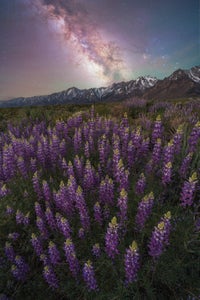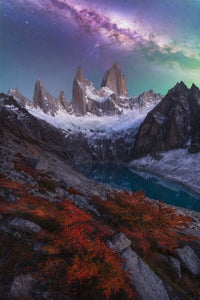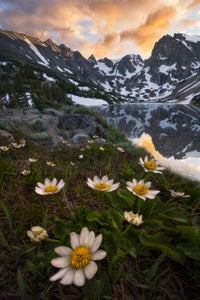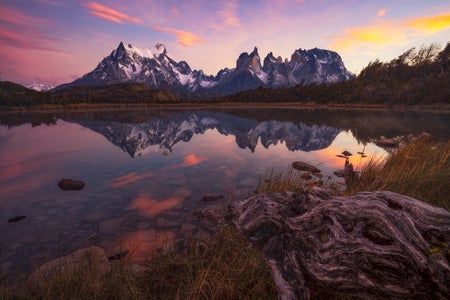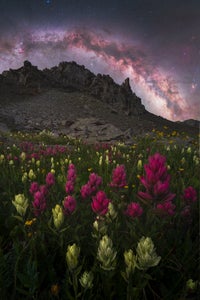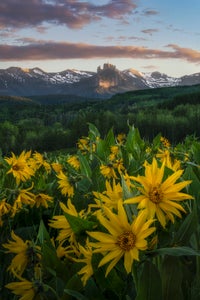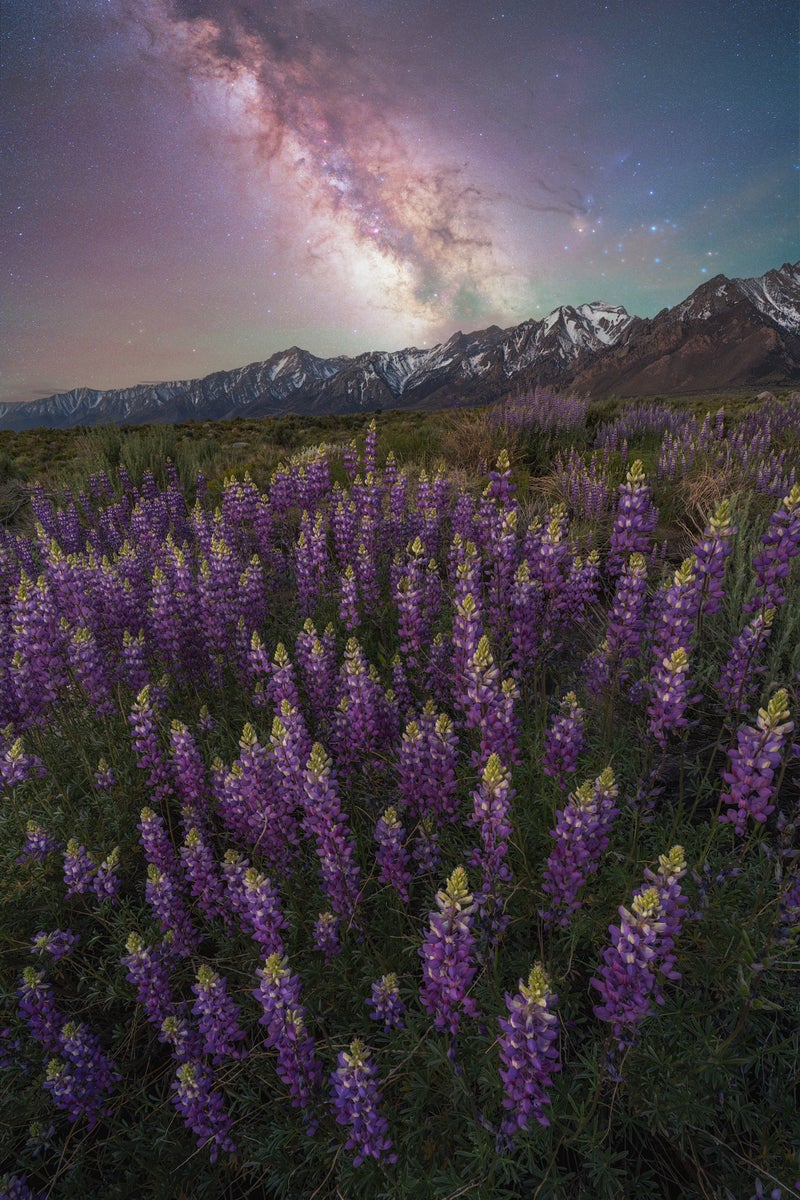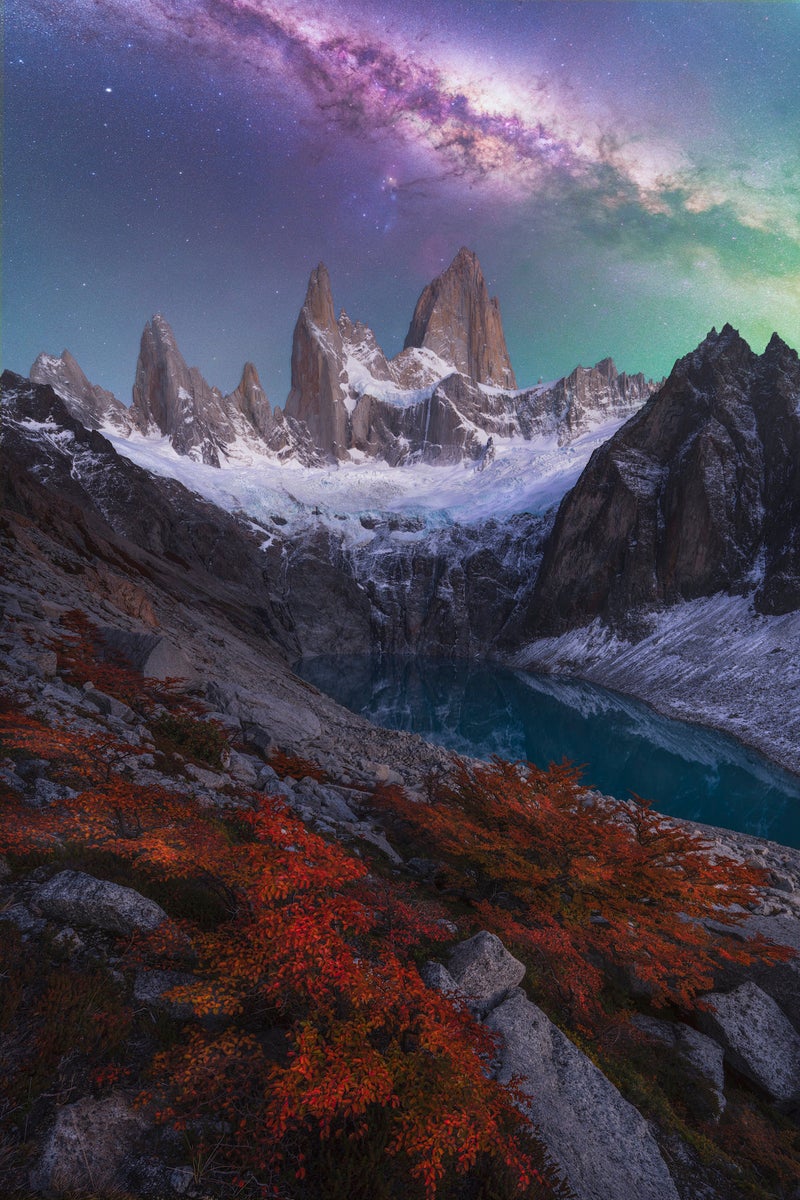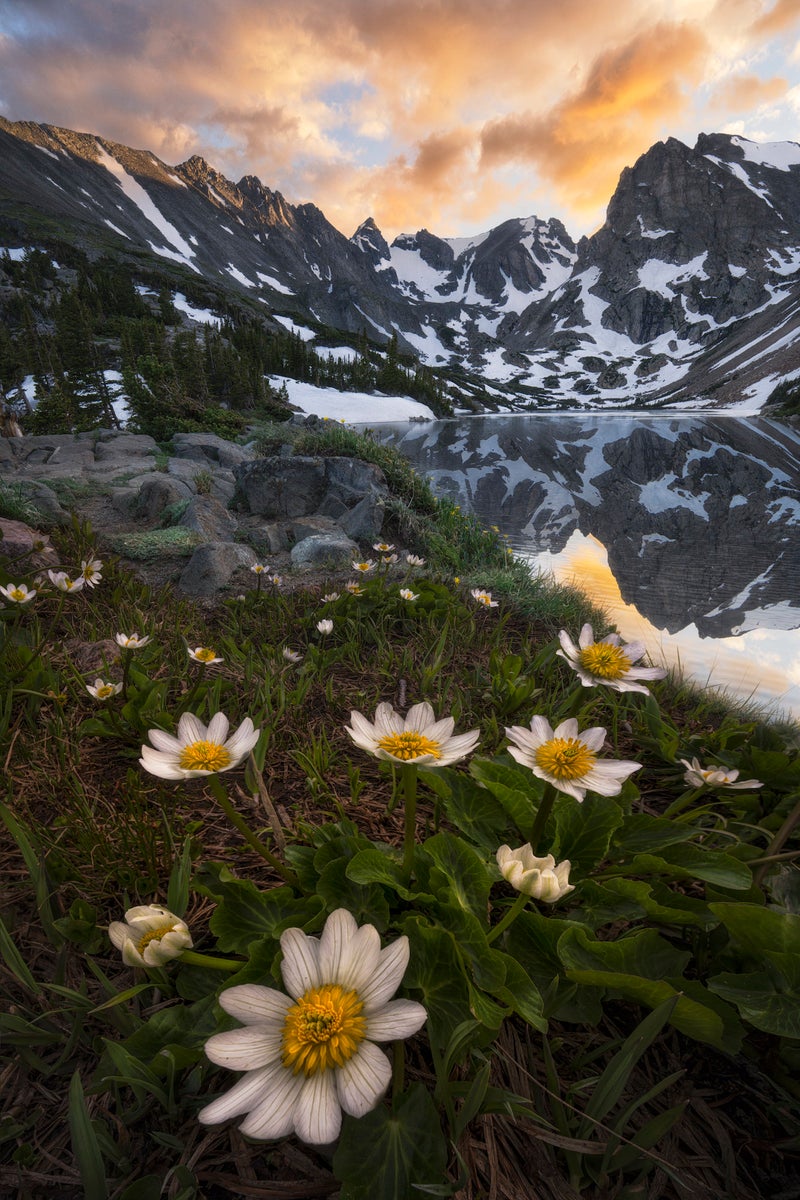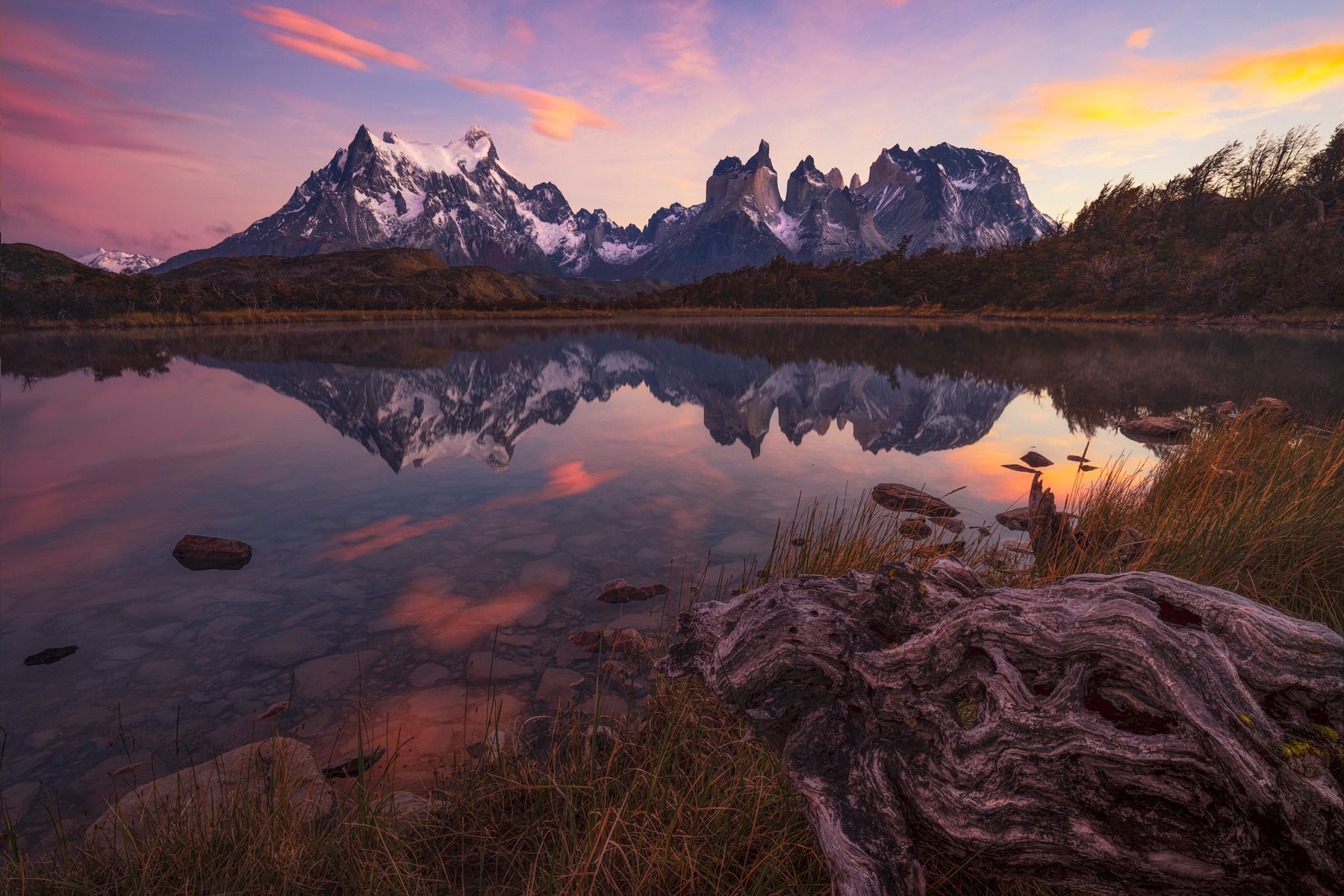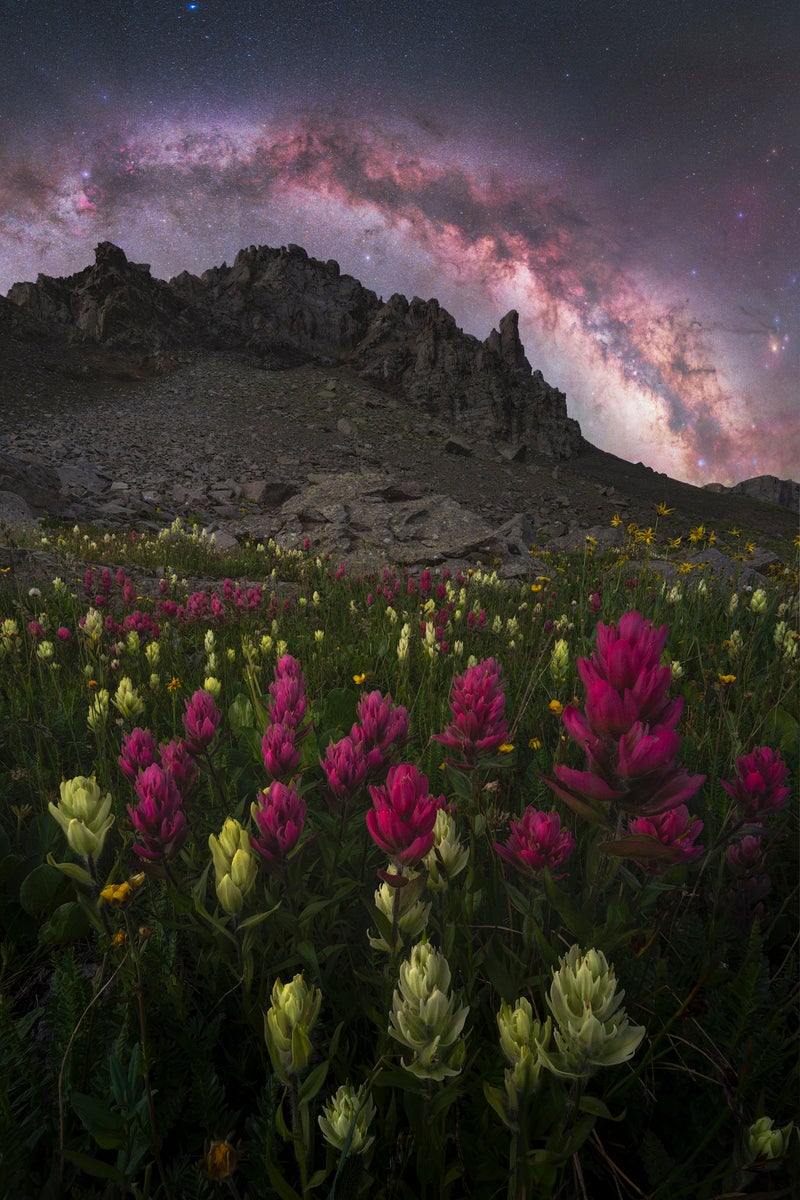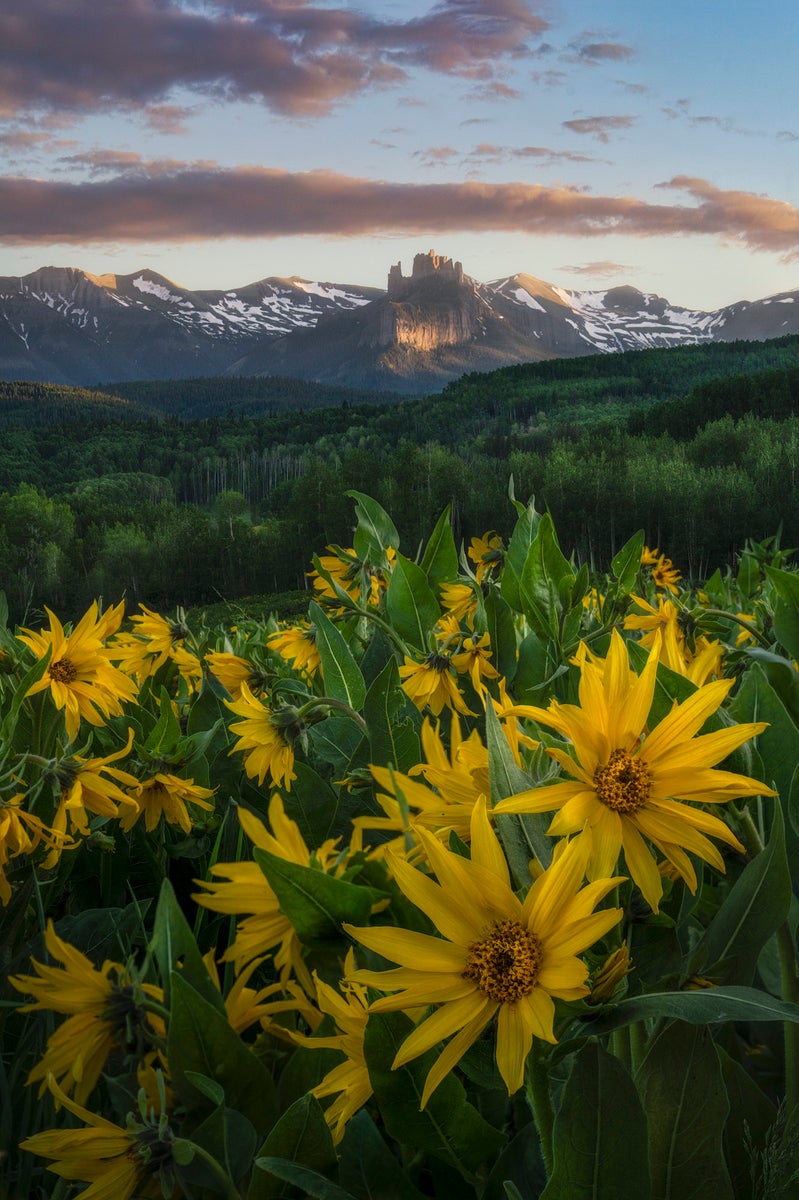Brandt Ryder (@brandtryderphotography) is a semi-pro landscape and nightscape photographer based in Colorado. Although a relative newcomer to photography having only started in 2018, his high dimensionality landscape and nightscape photography is immediately recognizable. Driven by a love for the creative process, an eagerness to learn, and a desire to constantly evolve as a visual artist – Ryder says picking up his first Sony Alpha Camera was a transformational life experience that allowed him to find and embrace creativity in a way he never dreamed possible. “I am always seeking new challenges, aiming to grow professionally, and build community in photography,” he explains. “My singular goal is for my images to tell compelling stories, inspire people and create a lasting emotional impact.” Ryder’s love of Sony Alpha for landscape and nightscape stems from the incredible low light performance and high dynamic range of Alpha 7 bodies and the best-in-class G Master lenses. Sony Alpha caught up with Ryder to learn more about his essential gear for visual storytelling.
Product Preview – In This Article You’ll Find:
–Sony Alpha 7 IV
–Sony 16-35mm f/2.8 G Master II
–Sony 24mm f/1.4 G Master
–Sony 14mm f/1.8 G Master
–Sony 24-70mm f/2.8 G Master II
–Sony TOUGH Memory Cards
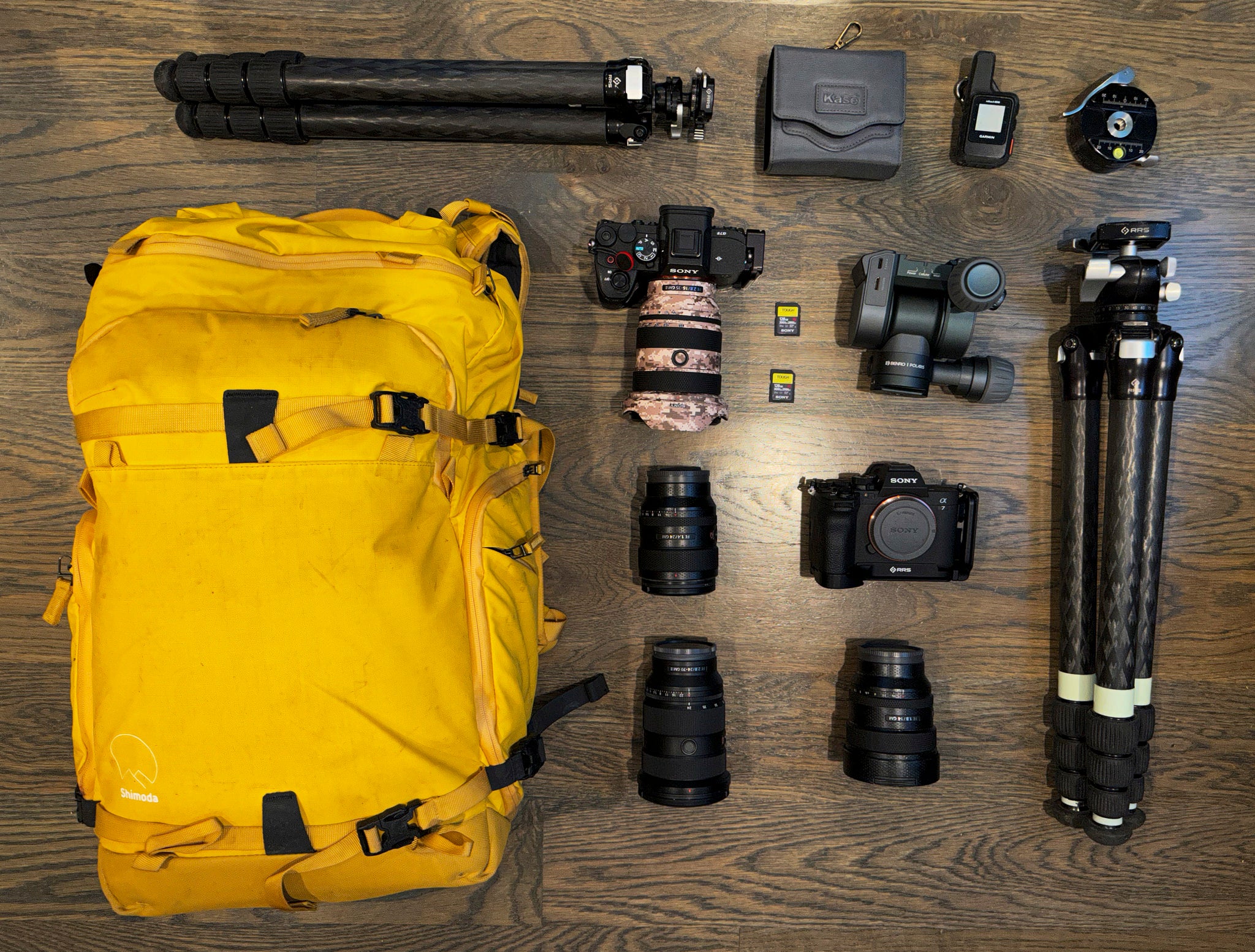
Cameras
Sony Alpha 7 IV: I absolutely love the versatility of the Sony Alpha 7 IV for both landscape and astrophotography. High pixel resolution isn’t always better. In fact, lower megapixel bodies can often perform better in the low light situations that are so common when shooting landscapes. Producing clean images is so important for fine art prints The Sony Alpha 7 IV’s 34-megapixel sensor is the sweet spot delivering images that are sharp, have incredible dynamic range, and are manageable in size when stacking and taking large panoramas. So many features of Sony Alpha 7 IV hit the mark for my workflow from ergonomics to weight to customizable buttons.
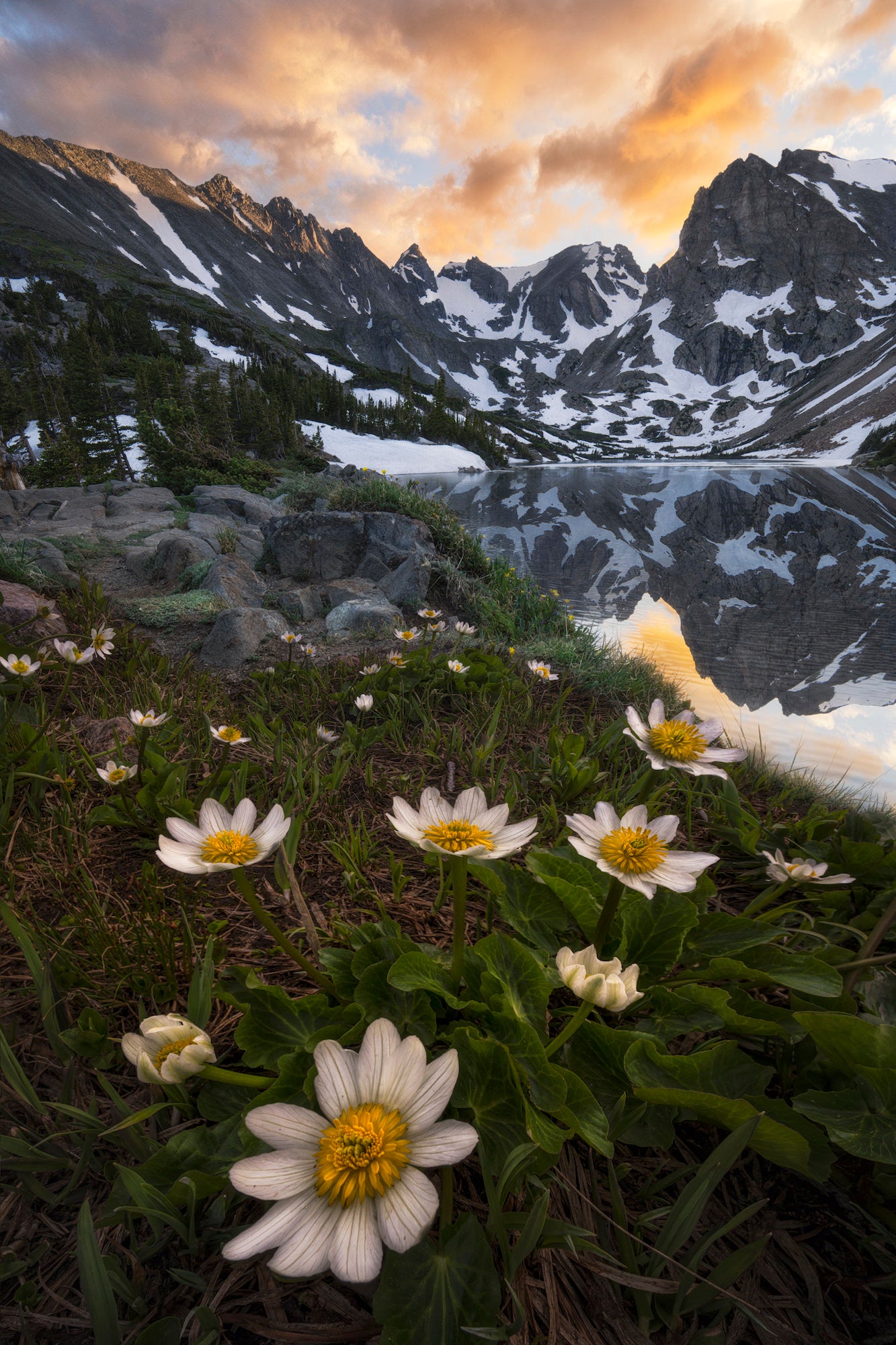
Photo by Brandt Ryder. Sony Alpha 7 IV. Sony 14mm f/1.4 G Master. 6-Focus Stacked. 1/13-sec., f/13, ISO 100
Sony Alpha 7 IV (Astromodified, Visible + H-Alpha): I’ve spent a couple nights under the stars since 2018 refining my astrophotography and nightscape craft, and was happy to have images in three of the last four years for the Milky Way Photographer of Year competition. I first astromodified one of my Sony bodies in 2022, a process that removes the camera’s built-in high-pass filter and replaces it with one that increases sensor sensitivity to red spectrum of light. H-Alpha is a red spectrum of light (656 nanometers) that is common in nebulae in the night sky.
The Sony Alpha 7 IV is the perfect astromodified camera because it already performed so well in low light situations. Doing a modification increases the amount of light getting to the sensor by about a ¼ stop and when combined with features like bright monitoring it almost feels like cheating. At the end of the day the detail and color that’s possible with an astromodified Sony really allows the night sky to be the STAR of the show.
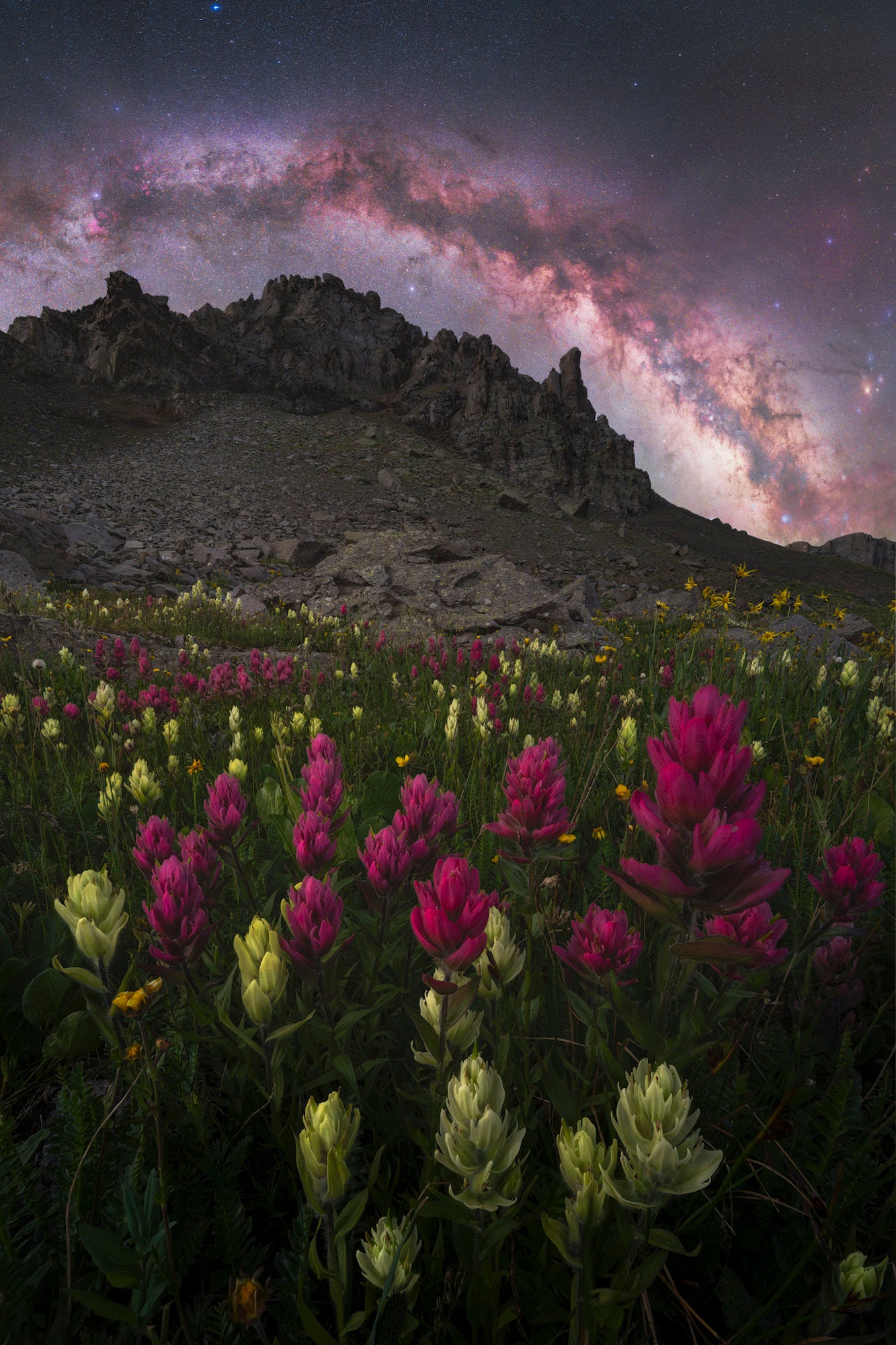
Photo by Brandt Ryder. Sony Alpha 7 IV Astromodified Visible + H-Alpha. Sony 14mm f/1.8 G Master. Ground, 6-Focus Stacked: 1/40-sec., f/11, ISO 3200. Sky, 5-panorama scaled to foreground: 120-sec., f/2, ISO 400
Lenses
Sony 16-35mm f/2.8 G Master II: Having a versatile lens is so important in landscape photography because you never know what kind of composition you might encounter. I love the 16-35mm because sometimes I need an ultra-wide angle to capture an intimate foreground subject like flowers, but other times a closer crop can make a photo. The Sony 16-35mm f/2.8 G Master II does it all and shines across the entire focal length spectrum. I owned version one for years so when the Sony 16-35mm f/2.8 G Master II came out that was smaller, lighter, sharper and had a closer front element focus distance I was immediately salivating. This lens rarely leaves my Sony Alpha 7 IV body as my go to all-arounder.
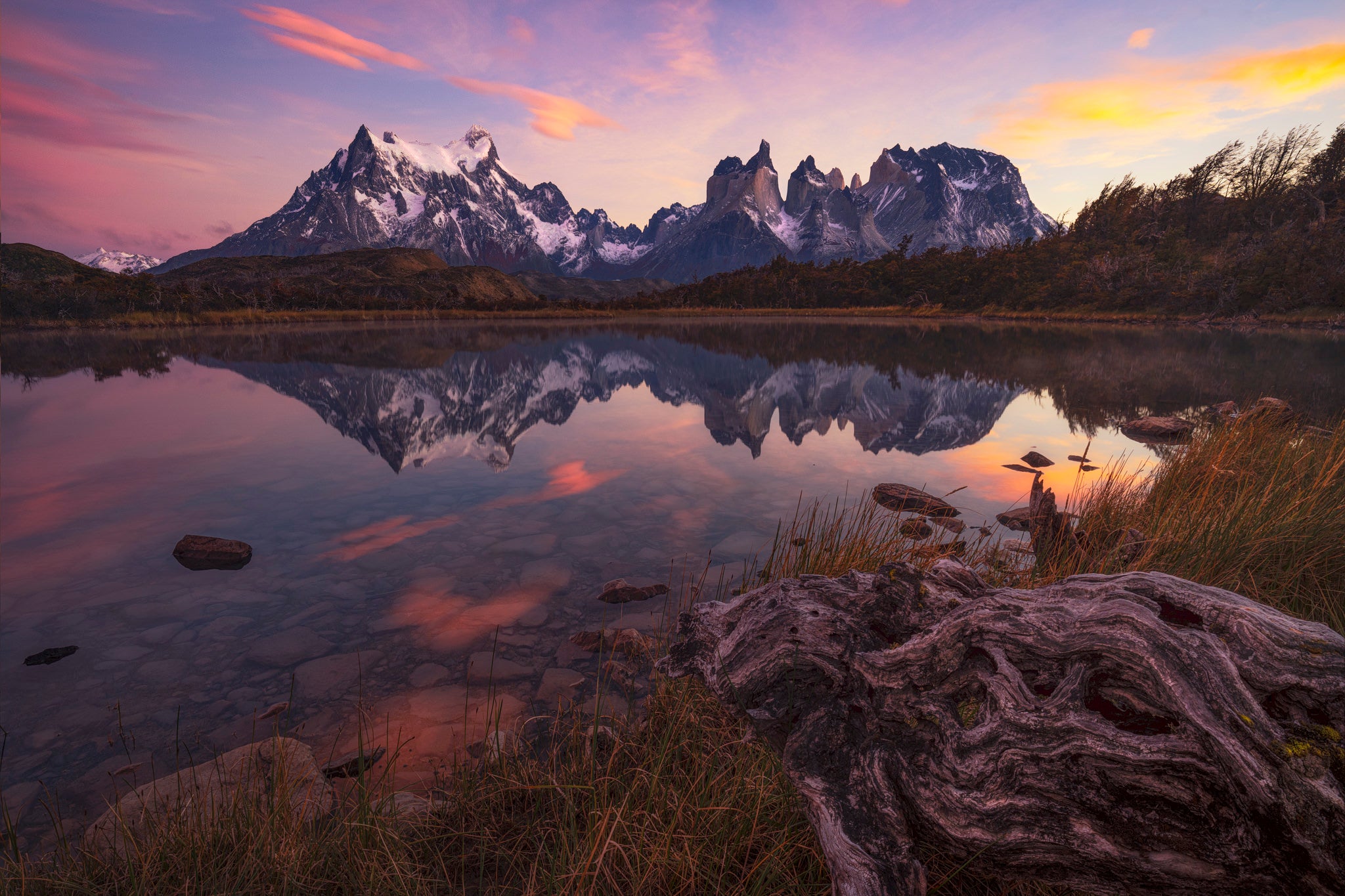
Photo by Brandt Ryder. Sony Alpha 7 IV. Sony 16-35mm f/2.8 G Master II. 5-Focus Stacked. .5-sec., f/13, ISO 100 (EXIF ISO 100, f/13, 0.5s x 5 focus stack)
Sony 24mm f/1.4 G Master: When it comes to astrophotography, primes are king and G Master lenses are hands down the best astro lenses on the market. The G Master glass resolves extremely sharp images that also have very low coma resulting in pin point stars from corner to corner. In my opinion, king among them is the Sony 24mm f/1.4 G Master. This superfast f/1.4 lens is a game changer for astrophotography when used in combination with a star tracker allowing for ISO as low as 400 when shooting the night sky. This allows for extremely low noise and some of the cleanest night images out there in the photography world. 24mm also happens to strike the perfect balance for Milky Way photography allowing for scale and detail in the galaxy’s core.
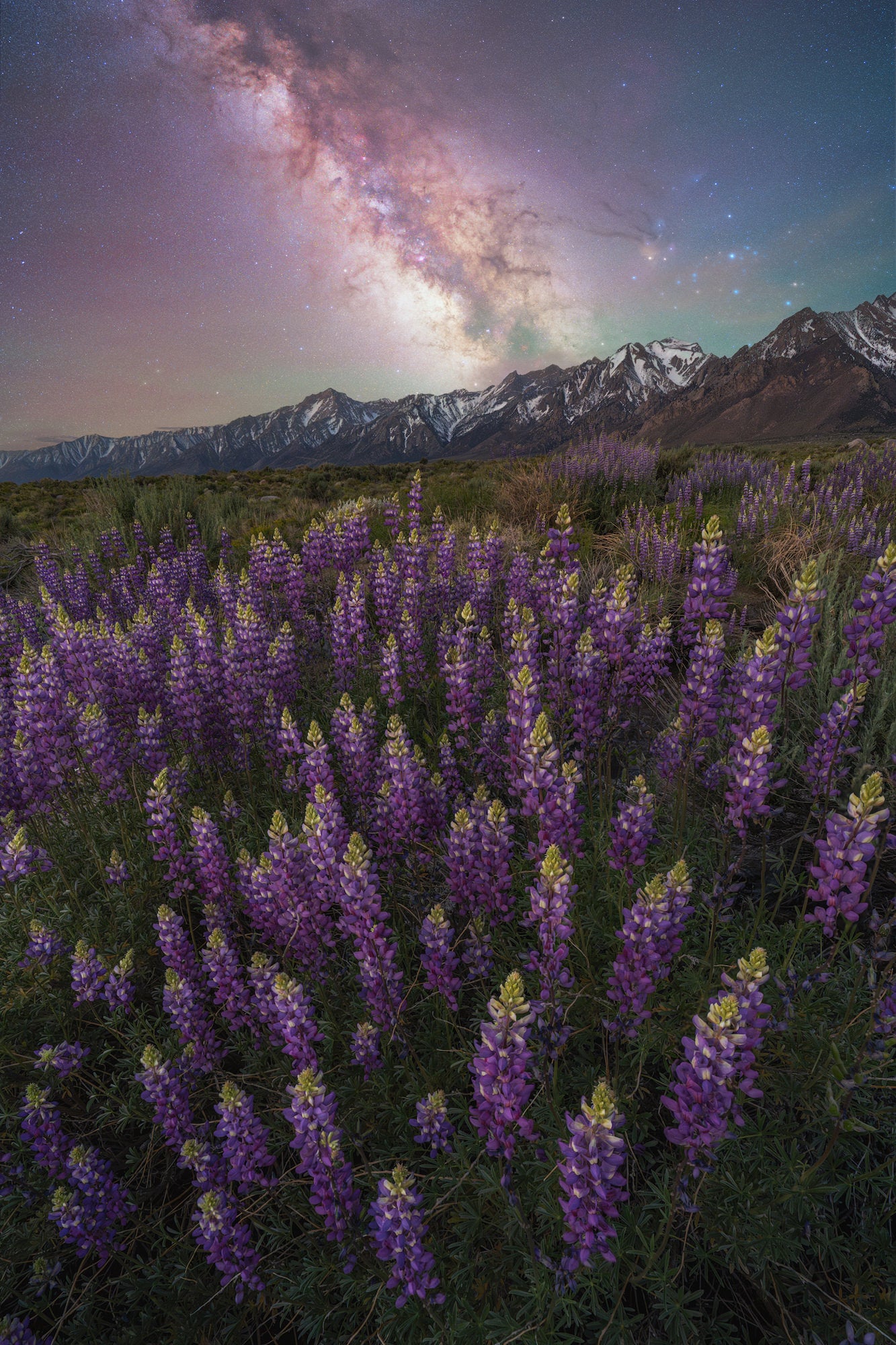
Photo by Brandt Ryder. Sony Alpha 7 IV, Sony Alpha 7 IV Astromodified Visible + H-Alpha. Sony 24mm f/1.4 G Master. Ground, 5-Focus Stacked. 1/160-sec., f/8, ISO 320. Sky, 3-Focus Stacked. 120-sec., f/2, ISO 800
Sony 14mm f/1.8 G Master: Ultrawide angle lenses are a landscape photographer’s best friend (once you know how to use them). My obsession with wildflower foregrounds typically drives my frequent use of the 14mm. Landscape photographers rarely use them, however, for mountains because they tend to dwarf them as a subject matter. That is unless you take advantage of the barrel distortion (pro tip). However, on a recent trip to Patagonia the mountains were so big that I literally needed a UWA lens to fit everything in! The Sony 14mm f/1.8 G Master also happens to shine for astrophotography. Best of all it can literally fit in the palm of your hand making it the perfect companion for those backcountry trips where every ounce counts.
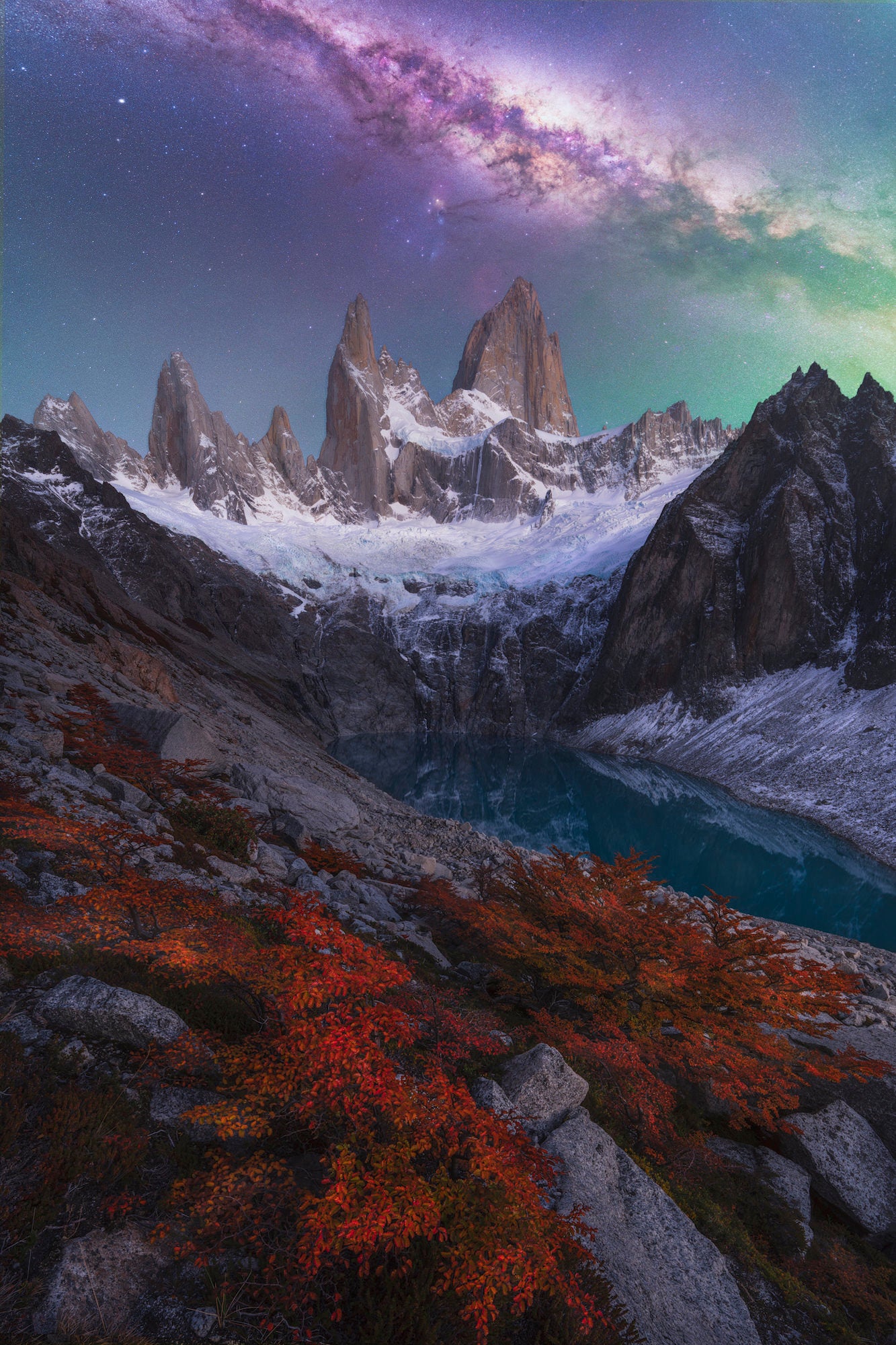
Photo by Brandt Ryder. Sony Alpha 7 IV Astromodified Visible + H-Alpha. Sony 14mm f/1.8 G Master. Ground, 4-Focus Stacked. .6-sec., f/13, ISO 100. Sky: 60-sec., f/2, ISO 1600
Sony 24-70mm f/2.8 G Master II: I always told myself I could live without one of the holy trinity lenses – the 24-70mm focal length. I resisted for years until Sony released the Sony 24-70mm f/2.8 G Master II. When I heard it was smaller, lighter and sharper than its predecessor I caved and bought it. I love having this versatility in my kit as it has made me see scenes and compositions in a totally new way. The 24-70mm really shines with compression shots. I mean what could be better than getting amazing wildflowers and compressed mountain peaks? Nothing!
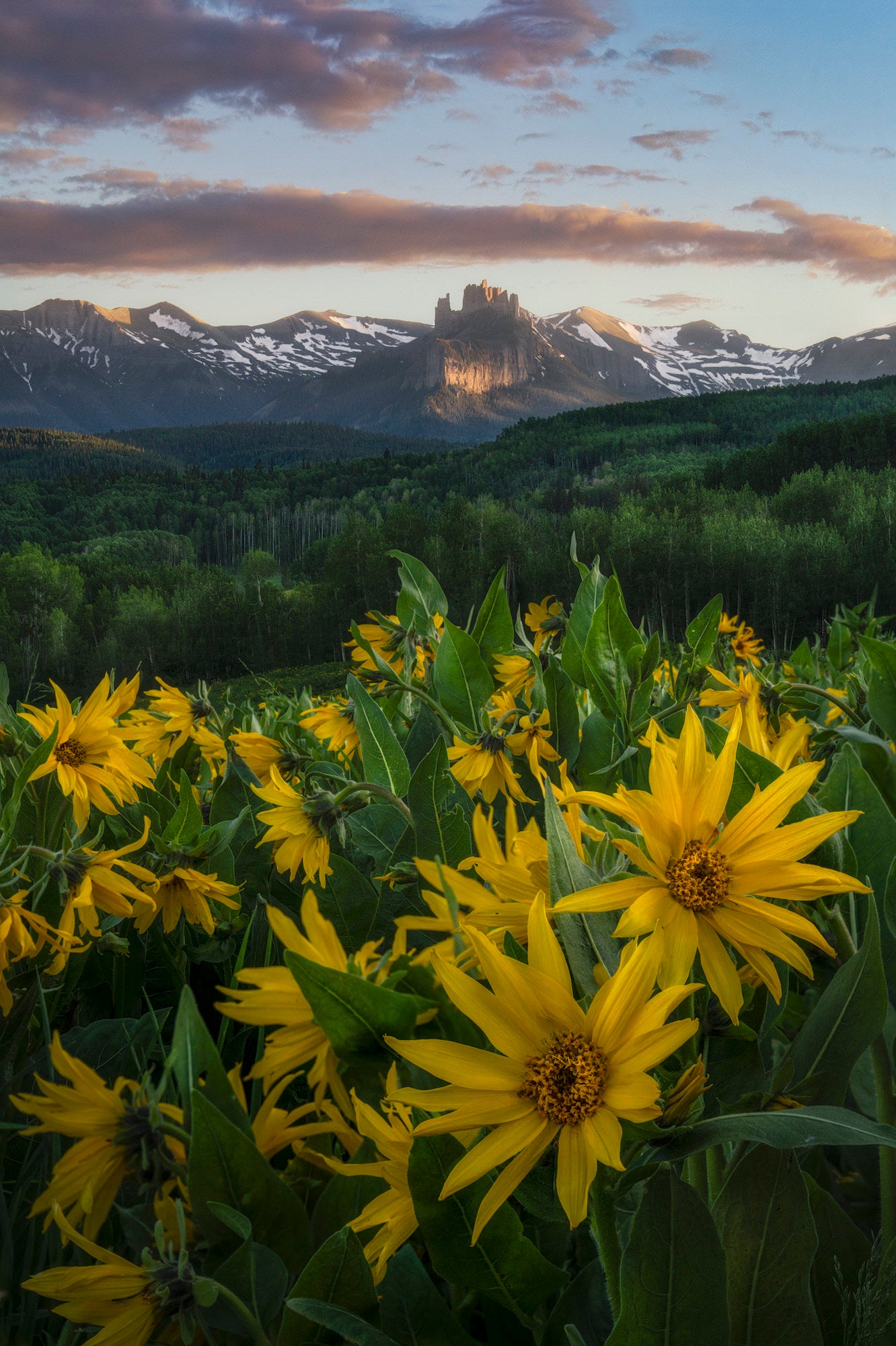
Photo by Brandt Ryder. Sony Alpha 7 IV. Sony 24-70mm f/2.8 G Master II. 1/125-sec., f/13, ISO 800
Accessories
Sony TOUGH Memory Cards: I’ve used countless brands of SD cards and there is nothing worse than losing an image you just spent hours trying to capture. Sony TOUGH cards are tougher than nails.
Shimoda Action X30: Having owned the X50 for years he kept asking for a baby brother. I finally relented and got a smaller sibling for hauling the expensive stuff.
RRS TVC-24 & BH-40 Ballhead: My go-to for doing landscape and astrophotography in gale force winds. Yes, I’m that stubborn.
RRS Ascend 14: On the less breezy days or when I need to walk more than a mile to shoot (pretty much every photo) this is an absolute beast of a tripod and lighter than air.
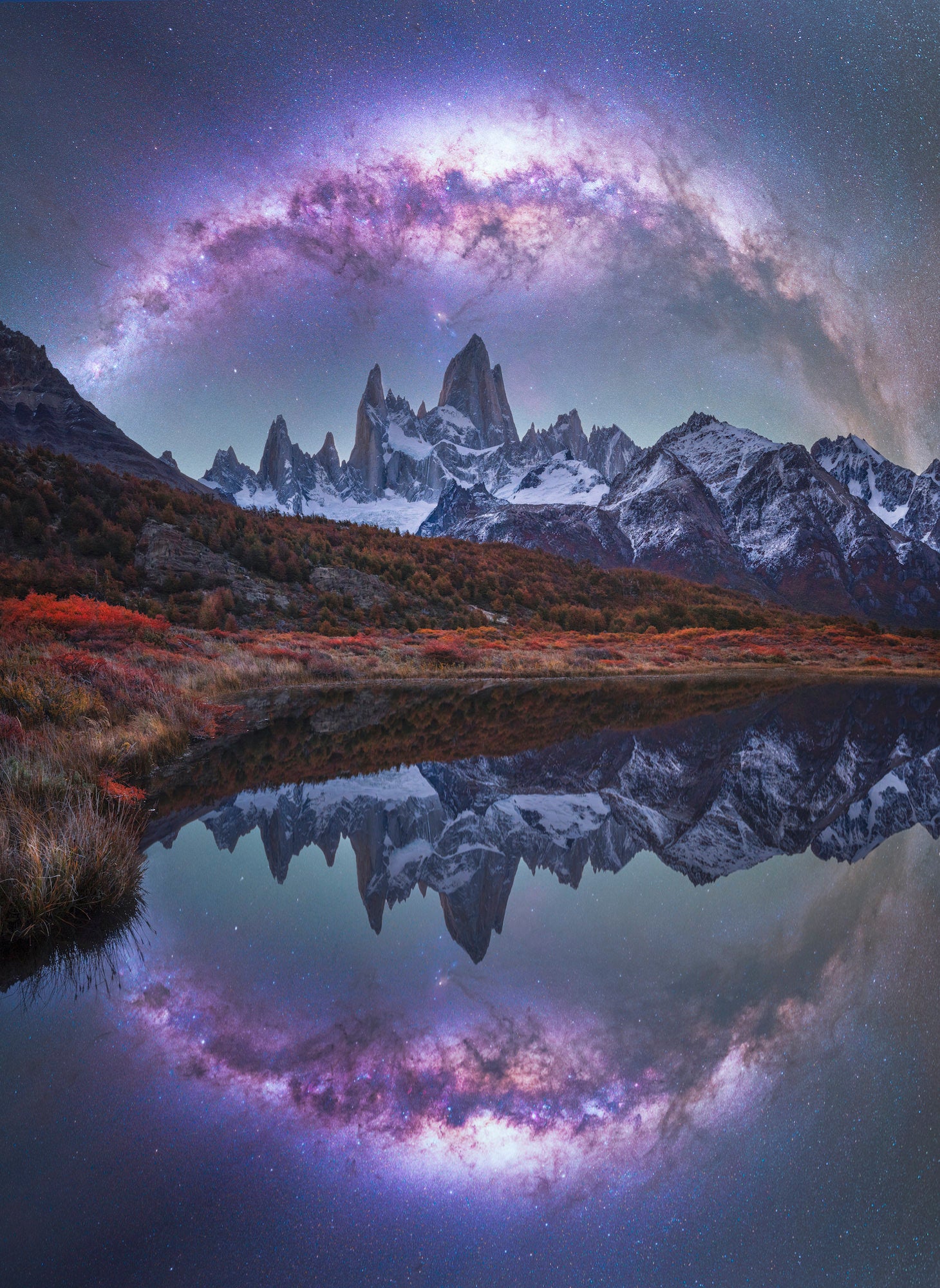
Photo by Brandt Ryder. Sky & Reflection: Sony Alpha 7 IV. Sony 14mm f/1.8 G Master. 60-sec. X2 stacked, ISO 1600. Ground: Sony Alpha 7 IV. Sony 24mm f/1.4 G Master. 3.2-sec., f/13, ISO 400. Read more about this image in Behind The Shot: A Milky Way Panorama.
RRS L Brackets: I love the convenience of being able to switch seamlessly from portrait to landscape in the blink of an eye. These L brackets also do a great job protecting my precious Sony Alpha 7 IV bodies from bumps and bruises.
Benro Polaris Star Tracker: Turns out the earth spins. I’ve said it before and I’ll say it again Copernicus was a huge fan of star trackers.
Kase Revolution Magnetic Filters: Magnets are cool and filters that are magnetic are even cooler.
See more of Brandt Ryder’s work on his Instagram @brandtryderphotography.
